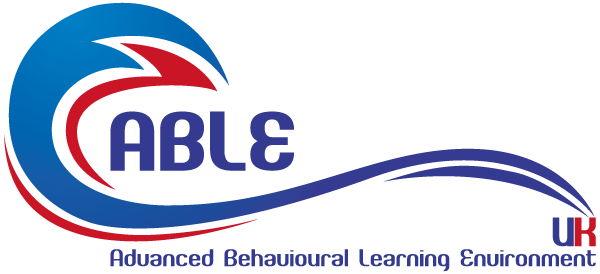Speech Therapy Techniques: Helping Your Child Find Their Voice

As parents, we cherish every moment of our child’s growth, from their first steps to their first words. However, some children may experience difficulties in speech and language development, which can be concerning. Speech therapy is a fantastic resource that can help your child overcome these challenges and find their voice.
If you’ve ever googled “speech therapy near me,” chances are you will a lot of resources and techniques for speech therapy. With the variety of techniques out there, it’s natural to wonder which ones will be the most effective. This guide will delve into some key speech therapy techniques, helping you understand how they can empower your child to find their voice.
What is Speech Therapy?
Speech therapy is a specialized field focused on assessing, diagnosing, and treating speech, language, and communication disorders. It involves a range of techniques and activities tailored to the unique needs of each child, aiming to improve their verbal and non-verbal communication skills.
The Role of a Speech Therapist
A speech therapist, also known as a speech-language pathologist (SLP), works with children who have speech delays, articulation issues, stuttering, voice disorders, and more. They create individualized therapy plans to address specific areas of need, using evidence-based practices to foster communication skills.
Techniques Used in Speech Therapy
There are various techniques and resources used by speech therapists to treat speech disorders in children. Here are some of the gems you might find inside:
- Articulation Therapy: This technique focuses on improving the way your child produces specific sounds. Think of it as fine-tuning the notes your child uses to create their unique melody. Therapists might use games, visuals, and mirrors to help your child master tongue placement and articulation.
- Language Therapy: This broader approach tackles the overall structure and use of language. It can involve activities that help your child understand the meaning of words, construct sentences, and use language for different purposes, like storytelling or requesting something. Imagine it as teaching your child the grammar and rhythm of communication.
- Pragmatics Therapy: This technique focuses on using language appropriately in different social contexts. Therapists might help your child understand the concept of turn-taking, appropriate volume and tone of voice, and how to use language for different purposes like requesting or greeting someone. It’s like teaching your child the “etiquette” of the communication symphony.
- Play-Based Therapy: Let’s face it, learning is most fun when it feels like playtime! Speech therapists often use engaging games and activities to make therapy sessions enjoyable and interactive.
- Augmentative and Alternative Communication (AAC): For some children, verbal communication might be a challenge. Speech therapists can introduce AAC tools and techniques like picture boards or electronic communication devices to help your child express themselves effectively. It’s like providing additional instruments in the orchestra so your child can still participate and be heard.
- Oral-Motor Therapy: Oral-motor therapy targets the muscles involved in speech production, focusing on strength, coordination, and movement.Therapists use exercises such as blowing bubbles, sipping through straws, and making silly faces to strengthen the oral muscles. These activities help improve the child’s ability to articulate sounds and speak more clearly.
- Social Skills Training: Social skills training helps children with communication disorders interact more effectively with others, enhancing their social interactions. Therapists use role-playing, group activities, and social stories to teach children how to start conversations, take turns, maintain eye contact, and understand non-verbal cues. These skills are crucial for building relationships and functioning in social settings.
- Fluency Shaping: Fluency shaping techniques are used to help children who stutter achieve smoother, more fluent speech. Therapists teach strategies like slow speech, gentle onset of sounds, and controlled breathing. These techniques help reduce stuttering and promote confident communication.
Benefits of Speech Therapy
Speech therapy can help your child with not only addressing speech difficulties but also enhancing their social and cognitive abilities overall. The benefits of speech therapy are summarized below;
- Improved Communication Skills: Speech therapy helps children articulate their thoughts and needs more effectively, leading to better communication with family, friends, and teachers.
- Enhanced Academic Performance: Good communication skills are essential for academic success. Speech therapy can support reading, writing, and comprehension abilities, contributing to better performance in school.
- Boosted Confidence and Self-Esteem: As children improve their speech and language skills, they often become more confident and willing to participate in social interactions and classroom activities.
- Better Social Interaction: Speech therapy teaches essential social skills, enabling children to interact more positively with peers and adults, fostering better relationships.
Finding the Right Speech Therapy Near You
Finding the right speech therapist for your child can be daunting. Follow these steps to help you navigate through the process and find the right professional suited for your child’s needs;
- Research and Recommendations: Start by researching local speech therapy providers. Ask for recommendations from your paediatrician, family members, friends, or other parents who have used speech therapy services.
- Credentials and Experience: Look for certified speech-language pathologists with experience in treating children with similar speech and language issues. Check their qualifications and areas of expertise.
- Initial Consultation: Schedule an initial consultation to discuss your child’s needs and assess the therapist’s approach. This meeting will help you determine if the therapist is a good fit for your child.
- Parental Involvement: Choose a therapist who encourages parental involvement and provides guidance on supporting your child’s progress at home. Collaboration between the therapist and family is crucial for successful outcomes.
Practical Tips for Supporting Your Child at Home
- Create a Language-Rich Environment: Surround your child with language by talking to them, reading together, and encouraging conversations. Describe everyday activities, ask open-ended questions, and listen attentively to their responses.
- Use Visual Supports: Visual aids like picture books, flashcards, and storyboards can help reinforce language skills. These tools make abstract concepts more concrete and easier to understand.
- Play Interactive Games: Engage your child in games that promote speech and language development. Activities like “I Spy,” storytelling, and board games can make learning fun and interactive.
- Model Good Speech: Speak clearly and use proper grammar when talking to your child. They learn by imitating, so providing a good example is essential.
- Be Patient and Encouraging: Celebrate your child’s progress, no matter how small. Provide positive reinforcement and be patient as they work on their speech and language skills.
Choosing the Right Techniques for Your Child
Every child is unique, and so are their speech and language needs. Speech therapists will conduct a comprehensive evaluation to identify your child’s specific challenges and strengths. Based on this assessment, they will develop a personalized therapy plan that incorporates the most effective techniques. Here are some factors that might influence the choice of techniques:
- Age: The techniques used for toddlers will naturally differ from those used for school-aged children.
- Specific Speech or Language Delays: The chosen techniques will target the specific areas where your child needs the most support.
- Learning Style: Does your child thrive on visual aids, hands-on activities, or auditory learning? Therapists will tailor their approach to your child’s preferred learning style.
Conclusion
Speech therapy is a powerful tool that can help your child overcome speech and language challenges, enabling them to communicate effectively and confidently.
By understanding the various techniques used in speech therapy and knowing how to find the right therapist for your child, you can take proactive steps to support your child’s development. Remember, early intervention is key, and with the right support, your child can find their voice and thrive.

7 comments
Megane Ernser
July 13, 2024 @ 12:29 amYour passion for your craft is inspiring.
Arne Koch
July 16, 2024 @ 10:57 pmThis was very enlightening, offering perspectives I hadn’t considered before.
Christel Hanger
August 10, 2024 @ 9:44 pmAs someone still navigating this field, I find your posts really helpful. My site is UQ8 and I’d be happy to have some experts about Thai-Massage like you check it and provide some feedback.
Kyoko Roland
August 19, 2024 @ 8:26 pmI came across your site wanting to learn more and you did not disappoint. Keep up the terrific work, and just so you know, I have bookmarked your page to stay in the loop of your future posts. Here is mine at 46N about Airport Transfer. Have a wonderful day!
Aurelio Nowak
August 27, 2024 @ 2:17 pmThank you for sharing your precious knowledge. Just the right information I needed. By the way, check out my website at QH9 about Content Writing.
Beatrice Dostie
October 22, 2024 @ 11:36 amGreat!!! Thank you for sharing this details. If you need some information about Car Purchase than have a look here QH3
91betapp
December 5, 2025 @ 10:36 pmYo, 91betapp is legit! Had some good luck on there recently. Check it out 91betapp.